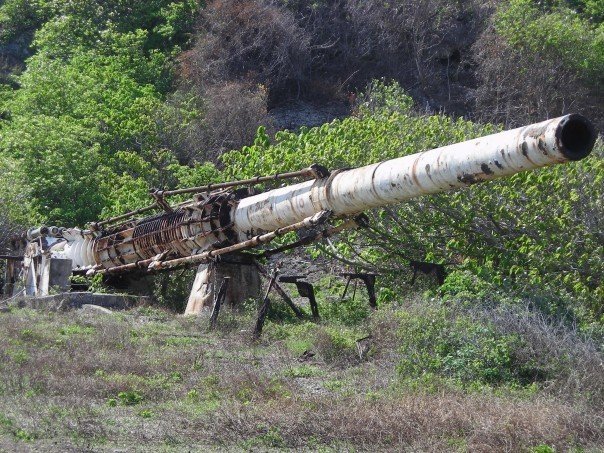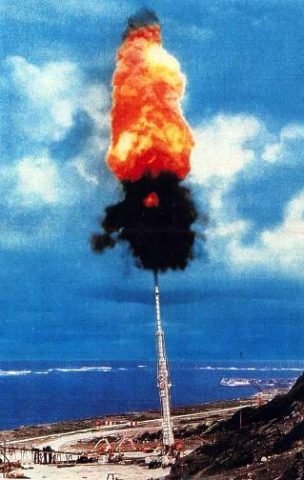Project Harp
HAARP, the High Frequency Active Auroral Research Program.
Project HARP, short for High Altitude Research Project, was a joint project of the United States Department of Defense and Canada's Department of National Defence created with the goal of studying ballistics of re-entry vehicles at low cost; whereas most such projects used expensive and failure-prone rockets, HARP used a non-rocket spacelaunch method based on a very large gun to fire the models to high altitudes and speeds.![Abandoned-HARP-Gun.jpg]
( )
)
Abandoned HARP gun in Barbados

Started in 1961,[1] HARP was created largely due to lobbying from Gerald Bull, a controversial but highly successful ballistics engineer who went on to head the project. Bull had developed the high-speed gun technique while working on anti-ballistic missile (ABM) and intercontinental ballistic missile (ICBM) research at CARDE in the 1950s, shooting models of high-speed interceptor missiles from guns as opposed to building supersonic wind tunnels, which would be much more expensive. The ABM project eventually ended without delivering a working system, but Bull was convinced the rocket systems he had developed had potential and started looking for other ways to use the technology. Funding for the project came from the Department of Defence Production in the form of a $500,000 grant and an loan of $200,000 from the McGill board of governors
The U.S. was in the process of testing newer ICBM systems and required repeated tests of newer re-entry vehicles. Bull suggested that the program could be run for considerably less money if the test vehicles were lofted from a large gun, as opposed to using rockets. This would also allow the test program's schedule to be greatly accelerated, as repeated firing was easy to arrange, compared to rockets. The key concept was the use of an oversized gun firing an undersized vehicle mounted in a sabot, allowing it to be fired with relatively high acceleration. Test electronics were potted in a mix of sand and epoxy, proving more than capable of withstanding the rigors of launch.
The project was based on a flight range of the Seawell Airport in Barbados at 13.077221°N 59.475641°W, from which shells were fired eastward toward the Atlantic Ocean using an old U.S. Navy 16-inch (410 mm)/50 Caliber gun (20.5 m, or 50 times the caliber, in length); addition of a second barrel later extended it to 16"/100 caliber (41 m long). In 1966 the project installed its third and final 16-inch gun at a new test site in Yuma, Arizona. On November 18, 1966 the Yuma gun fired a 400 lb (180 kg) Martlet 2 projectile at 7,000 ft/s (2,100 m/s)[2] sending it briefly into space and setting an altitude record of 180 km (590,000 ft; 110 mi); that world record still stands as of 2013.[3]
Hi! I am a robot. I just upvoted you! I found similar content that readers might be interested in:
https://en.wikipedia.org/wiki/Project_HARP
Congratulations @arrowman! You have completed some achievement on Steemit and have been rewarded with new badge(s) :
Click on the badge to view your Board of Honor.
If you no longer want to receive notifications, reply to this comment with the word
STOPCongratulations @arrowman! You received a personal award!
You can view your badges on your Steem Board and compare to others on the Steem Ranking
Vote for @Steemitboard as a witness to get one more award and increased upvotes!